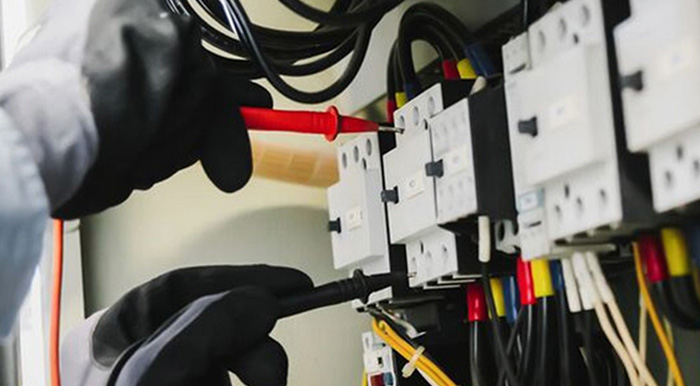Build trust in your product or brand and gain a competitive advantage in complex global markets with independent certification or verification by SGS.
A wide variety of voluntary ecolabeling schemes have appeared in recent years to help businesses striving to meet the consumer demand for more sustainable products and services. However, environmental claims will only help consumers if they are based on scientific evidence and can be trusted.
SGS Green Marks – environmental claim certification and verification
Our independent assessment scheme, based on recognized standards such as ISO 17065, ISO 17029, ISO 14065, and ISO 14021, ensures your product has passed all defined criteria allowing you to differentiate your product in fractured markets. All protocols include a clearly defined product scope and certification/verification criteria, leaving the consumer in no doubt as to the meaning of the environmental claim. Focusing on just one attribute per mark allows you to communicate your product’s positive environmental aspects to consumers more clearly.
We cover a wide variety of environmental attributes:


Carbon Footprint and Carbon Reduced
As governments and regulators around the world set ambitious goals to achieve carbon neutrality in the coming decades, the PCF (Product Carbon Footprint) has become an essential measure of greenhouse gas emissions and removals within a product’s life cycle. The SGS Carbon Footprint mark transparently shows that your product complies with the stated values.
Along the specified product life cycle, the carbon footprint mark indicates the carbon footprint (PCF) of the product. This is indicated in carbon dioxide equivalents (CO2e) per product, unit, or mass, in relation to greenhouse gas emissions/removals. The label “Carbon Reduced” states the reduction of the PCF (amount and percentage) compared to the value of the previous assessment.
Example products:
- Electronics
- Household products

Recycled Content
Significance:
The requirements for a minimum percentage of recycled content in packaging and products are growing in many countries.
Manufacturers and retailers alike are striving to gradually increase the recycled content in their products in order to meet their climate neutrality commitments without compromising product functionality, durability, and safety.
Example products:
- Plastic packaging
- Fabrics
- Plastic toys/products
Recycled Content Requirements Summary – Download the PDF

PFAS Assessed
Significance:
Highlights the better chemistry of a product or packaging.
Since some PFAS (“forever chemicals”) are suspected of being carcinogenic and of hardly degrading in the environment, efforts are underway in many countries to eliminate them from both products and packaging across many industries.
Example products:
- Non-stick cookware
- Water-resistant clothing
- Food-contact packaging

Biobased
This symbol indicates the percentage of bio-based carbon once a minimum of 20% bio-based carbon is reached, thereby supporting the move away from petroleum-based materials.
Some companies target the use of bio-based materials.
Example product:
- Bio-based plastic toys

Hazardous Substances Assessed
Significance:
Highlights the better chemistry of a product.
Aligns with the trend of eliminating problematic/toxic/bio-accumulative chemicals from products.
Example products:
- Personal protective equipment
- Work clothing
- Polyester/cotton shirts

PVC-free
Significance:
Companies have worked to phase out PVC in packaging, to avoid recycling-stream contamination.
Environmental concerns over vinyl chloride which is used to make PVC.
Example product:
- Data cables (jacketing material)

Industrial Compostable
The test mark confirms that the percentage of aerobic biodegradation during the test period is more than 90% and that unproven constituents do not exceed 5%.
Many companies have made commitments to make packaging recyclable, reusable, or compostable by 2025.
Some US cities are expanding composting programs and infrastructure.
Example products:
- Product packaging
- Compostable food-service ware

Biodegradability
Confirms the material has a minimum biodegradable level of 60% over a maximum period of 180 days and communicates the percentage of biodegradation.
For specific applications and regions where biodegradability is harmonized with appropriate product use and disposal.
Example product:
- Biodegradable flower transfer pot
What are the benefits of SGS Green Marks?
Products that are certified/verified by us under this program receive worldwide recognition through the SGS Green Marks. These marks can be used on your product, packaging, promotional materials, and advertising to show end users that the environmental claim is certified or verified by SGS, an independent third-party certification body.
All marks have a QR code that allows consumers to confirm that the mark and claim are authentic. Additionally, it will provide consumers with a link to a quick summary of the specifics of the certification.
Other specific benefits include:
- Provides third-party credibility to single-attribute environmental claims, facilitating trust and confidence
- Reduces the risk of greenwashing
- Differentiates your product from the competition
- Visualizes a corporate commitment to ESG and leadership in green product development
- Facilitates access to new customers and markets
- Enhances brand image
The certification process

Contact
Matthias Schädl
t: +49 89 78 74 75-103
E-Mail: This email address is being protected from spambots. You need JavaScript enabled to view it.
Markus Spiel
t: +49 89 78 74 75-130
m: +49 152 576 332 20
E-Mail: This email address is being protected from spambots. You need JavaScript enabled to view it.
Customer Service Team
t: +49 89 78 74 75-222
E-Mail: This email address is being protected from spambots. You need JavaScript enabled to view it.




